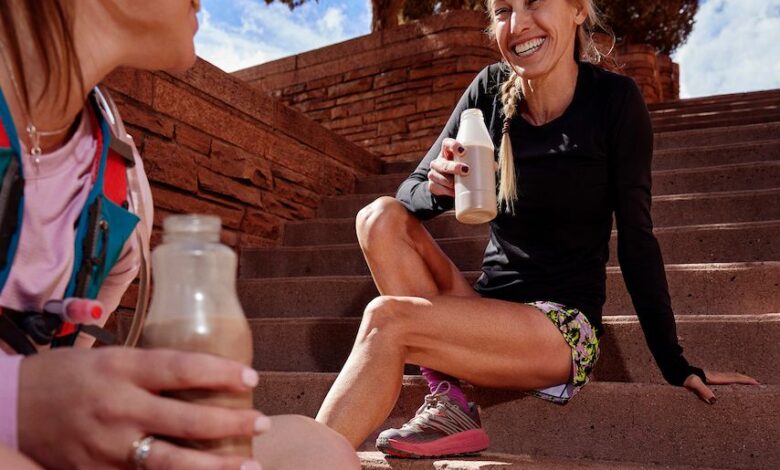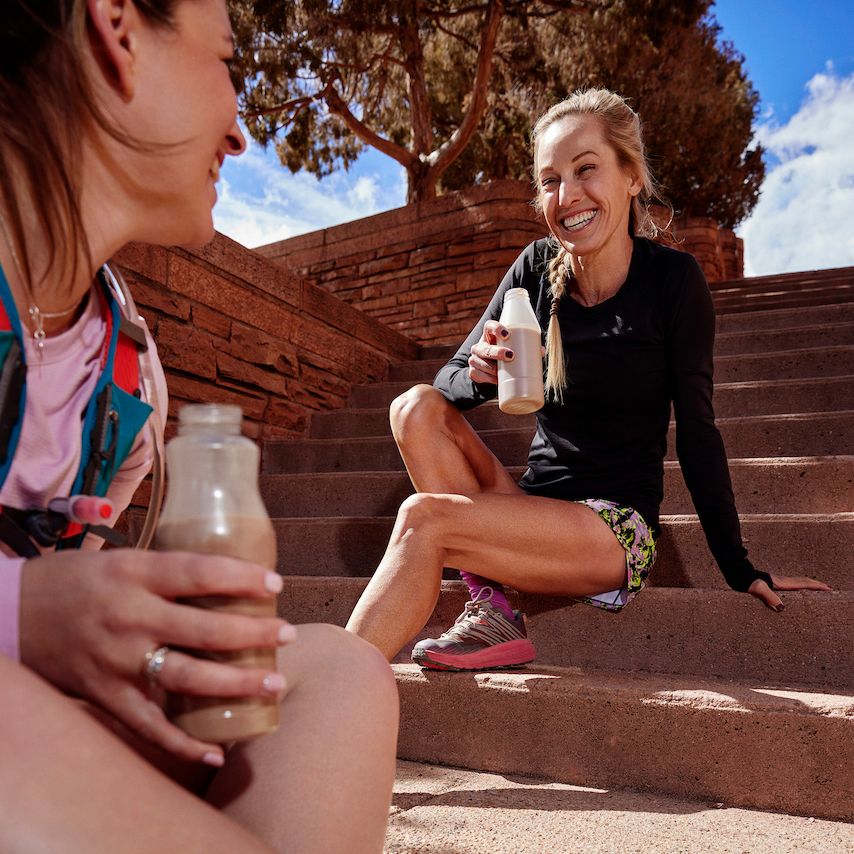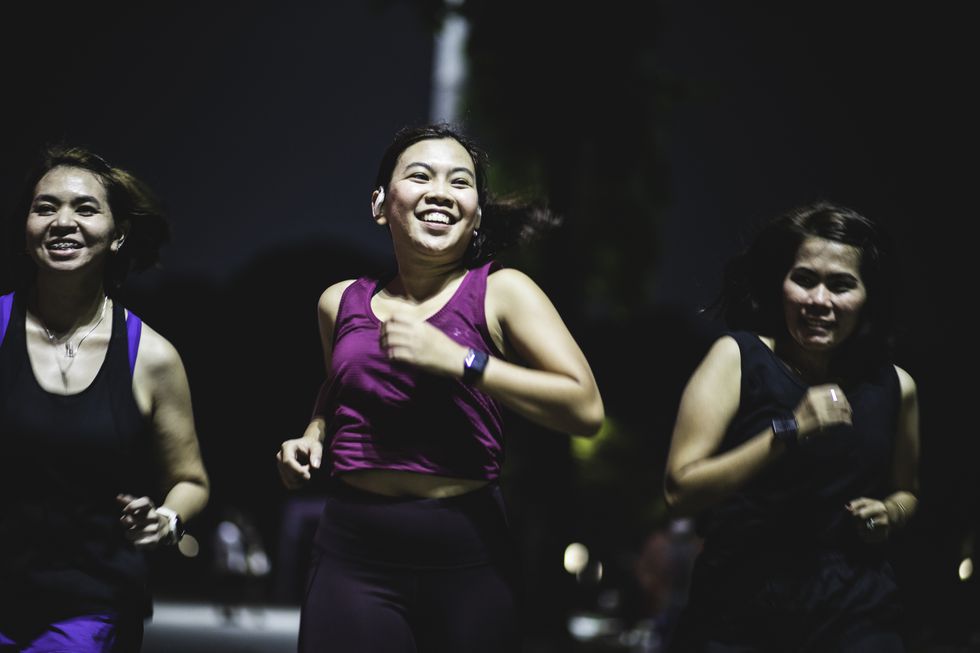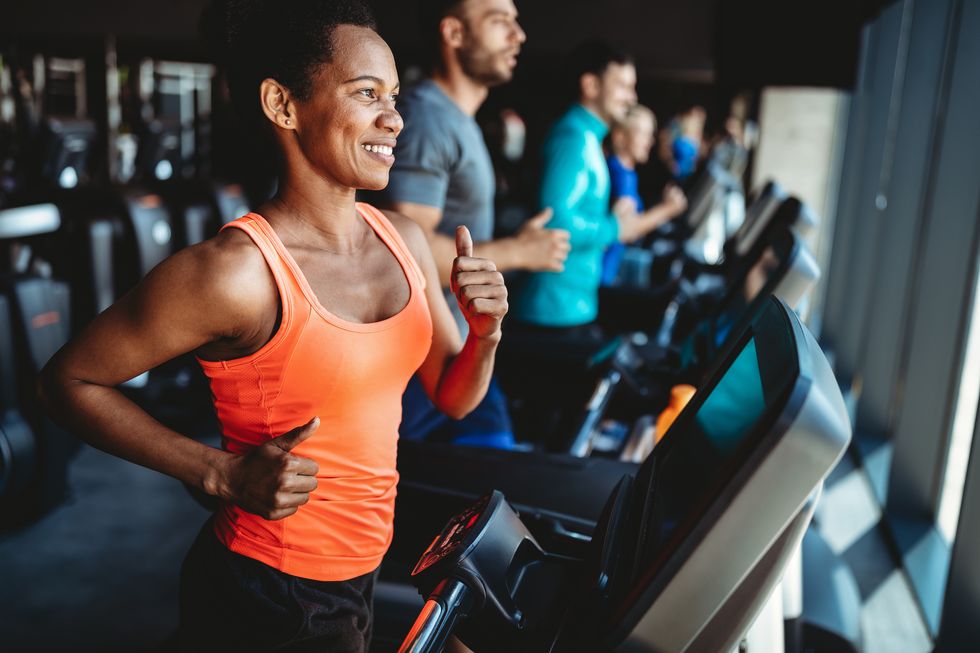A Woman’s Guide to Marathon Training in the Heat | Fitness tips of the day

Whether it’s the dog days of summer or you live in a warm climate, temperatures are high this fall marathon-training season. Cue the ice bath. The heat can be both your best friend and your worst enemy when it comes to sports, and this is 26.2 times more true for runners who are training for a marathon.
With some careful planning and some mental flexibility, you can still train in the sunniest season and log the miles needed to cross the finish line. Use these five expert-recommended strategies to beat the heat and ensure your marathon training is safe as well as successful.
1. Think About Hydration 24/7
When it’s hot out, you naturally drink more fluids, but marathon runners need to be more diligent than most. The key is to focus on hydration all day, every day—not just during your run—beginning the minute you wake up.
“Hydration before runs is especially important for morning runners because likely you didn’t drink anything during the night,” said marathon runner and nutritionist Starla Garcia, M.Ed., R.D.N., L.D. “Proper hydration before exercise also helps reduce soft-tissue injuries, especially when you’re training in the heat or humidity. I recommend drinking 8 to 16 ounces of fluid prior to running, with 300 to 500 milligrams of sodium added to help with absorption.”
Consider weighing yourself before and after your run—“that way you know how much fluid you’ve lost during exercise,” said Garcia.
During your run, sip water infused with electrolytes at least every 15 minutes. “And depending on the length of the run, carbohydrates can be implemented via gels, liquids, or gummies to help improve the absorption of electrolytes and fluids,” she said.
Afterward, make it a point to ingest 16 ounces of fluid per pound of body weight lost over the next several hours. “Rehydrate with chocolate milk after your run. This contains carbohydrates, high quality protein, and natural electrolytes (such as calcium, potassium, sodium, and magnesium) to help replenish what your body loses in sweat,” said Garcia.
During the rest of the day, eat hydrating foods. “Fruits like kiwis, melons, berries, and citrus are great sources of water as well as potassium—a good change of pace for runners who are tired of bananas,” added Garcia. “You should also consume foods with plenty of sodium, such as pickles and soy sauce, and things like white potatoes that contain minerals and electrolytes, as well as carbohydrates to assist with water retention.”
2. Choose Your Clothes Wisely
Runners need to strike a balance between staying cool and protecting themselves from the sun. When it comes to dressing for the heat, Jess Movold, a NASM-certified trainer and longtime Runner’s World coach, recommended finding the lightest, thinnest, most breathable clothing possible—preferably made of synthetic fibers. “This kind of clothing dries quickly so you’re not weighed down with sweat,” she said. “Avoid cotton at all costs.”
And don’t forget about your head. “I like to wear a brimmed hat with small holes to let the heat escape, and I also love a good visor for breathability and because it’s easier to fit all my curly hair through!” said Vanessa Peralta-Mitchell, a certified run coach and creator of VCPM, Inc.’s Game Changers program.
Once you buy an outfit, take it for a test run. “See how it does on a longer training day to ensure it doesn’t cause chafing between your thighs, around your waist, or under your arms,” said Peralta-Mitchell. “For insurance, I use an anti-chafe balm as an invisible barrier of protection, keeping my skin safe from the friction of my clothing.”
For an even cooler run, put yourself on ice. “A good trick of the trade is to add ice underneath your hat to keep your head cool,” added Garcia. “You can also put ice in your hydration vest to keep your water—and yourself—cool as you log your miles.”
3. Take Safety Precautions
Depending on where you live, the heat can become oppressive early in the morning and can blaze away all the way through to sundown. In these instances, it’s prudent to run early in the morning or later in the evening, when the sun is weakest or hasn’t even peeked above the horizon. Of course, safety is of the utmost importance for anyone running in the dark, so use these tips from our experts.
- “If you can, run with others; if not, make sure you tell someone your run plan and your route so they can check in with you afterward to make sure you’re safe,” said Movold.
- Carry your phone with you at all times. “Harassment can happen any time of the day, but at night it’s even scarier, so I strongly encourage carrying your phone in a run belt or in a side pocket,” said Peralta-Mitchell.
- Speaking of phones: “Have a friend track your location to double up on your safety,” said Movold.
- “Invest in reflective clothing, clip-on lights, or handheld flashlights to make you more visible to traffic,” said Garcia.
- “Leave your headphones at home so you can be aware of your surroundings at all times,” said Peralta-Mitchell.
4. Be Flexible With Your Schedule
Mother Nature doesn’t care a whit that you planned your long weekly run on the hottest Sunday of the year, or that the only time you can train is the hour you have someone watching the kids or during your lunch break. So, be adaptable. The ability to change your plan is paramount when you’re training for a marathon during the summer months.
“Your health and safety far outweigh any training session you have on deck—do what’s best for your body on any given day,” said Peralta-Mitchell. “Time on your feet is the name of the game, so if you have to replace interval work with straight, easy-pace running because of the heat, do it!”
This goes double on those oppressively muggy days. “Humidity prevents sweat from evaporating and cooling you down,” said Peralta-Mitchell. “Plan your hydration and clothing accordingly, and adjust the time of day you train if the dew point is very high.”
It’s also important to manage your expectations. “Scratch all your pace goals or prescribed numbers and rely on going by effort instead,” said Movold. “This allows you to get in the practice of the workout without the risk of overexertion or disappointment in your performance. There’s no reason to be the hero of one single workout. It’s more important to listen to your body rather than dealing with extreme heat exhaustion, sickness, or dehydration for days to come. Those things derail your training far more than one subpar workout performance.”
When it comes to training for a marathon, Milk has you covered. Partnering with Runner’s World, to bring you a marathon training program that give you the flexibility you need.
Download it HERE
5. Run Where It’s Coolest—Even if That’s Inside
Where you run is as important as what time you run, so during the summer, plan routes that offer optimal protection from the sun. “Find a safe trail that provides plenty of tree coverage instead of hitting the track or the open road where there’s no shade,” said Movold.
If you’re not sure where to go, “ask your local run club or run retail stores about the best areas for shaded miles,” said Peralta-Mitchell. “Running near water also brings a natural wind factor into play to help you keep cool. But be smart: If the heat makes it unsafe and counterproductive for building fitness for a marathon, the best thing to do just might be to push your run to the next day.”
When all else fails, take your training indoors. “Ultimately, you’re preparing your body and mind to run outdoors and you need to be ready on race day to run in any of the elements, short of lightning,” said Movold. “But sometimes, a treadmill is your best—and safest—friend. My philosophy is that if your choices are either to skip your run or run on the treadmill, you should run on the treadmill.”
See you at the finish line!





